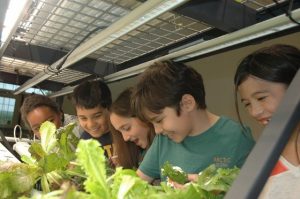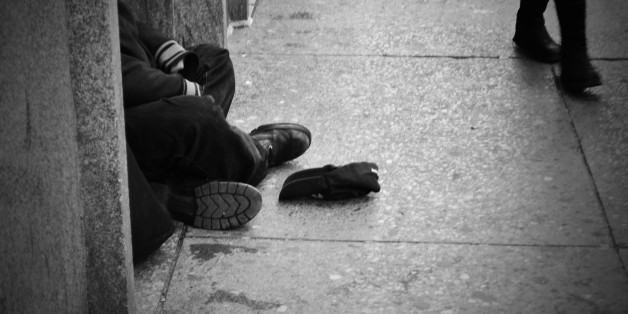It’s Time to Get Serious About Your Happiness
There’s a great quote by Jean-Paul Sartre: “We are our choices.” When it comes to our happiness and our overall success in life, that’s truer than you might have realized.
Taking time to examine the choices you make in your life and work each day and over the long term to make sure they are enhancing your well-being can do more than just make you happier. Working on enhancing happiness has actually been shown to have a tangible return on investment and can make you more successful.
Here’s one example from the business world. According to positive psychology researcher Shawn Achor, if you are happy and you have happy people around you in your organization, you can improve your organization’s performance and productivity by anywhere from 10 percent to 30 percent. And if your team is happier, you will take better care of your clients and have greater impact on them—which in turn will enable your team to do well financially.
With that in mind, here are steps for increasing your happiness in ways that will lead to better results in your work and in your life. These come courtesy of Henry Miller—a truly exceptional trainer, coach and consultant who helps companies and organizations improve their performance and productivity. He spent years analyzing the growing research on well-being and synthesizing it into his book The Serious Pursuit of Happiness—an essential road map to greater happiness.
Understand the basics
Some people think they are predisposed to be happy or unhappy and that’s just how it goes. Not so. You can take steps to enhance your happiness and that of the people around you. Research using data from the Minnesota Twin Registry shows that around 50 percent of our level of happiness depends on our deliberate thoughts, attitudes and actions—great news for those of you who assumed your level of happiness is hard-wired.
To improve the drivers of happiness that are within our control, start with some basic ideas to guide you:
• Happiness takes effort. Creating and enhancing happiness in your life, your family and your workplace is just like any other major initiative you undertake—it requires time and effort to get up and running smoothly.
• Happiness is a numbers game. The frequency of positive events in your life matters more than the intensity of those events. You’ll have better results if you boost the number of small positive moments in your day instead of trying to have just a few instances that are hugely positive.
• Happiness is a habit. Make happiness habitual—if you are not as naturally happy as other people, incorporate happy habits into your life while removing other habits.
• Do more for other people. When you spend time doing things for other people and trying to make them happy, you actually end up happier than when you do things to please just yourself.
PROVEN PATHS TO HAPPINESS
Research has shown that basing your decisions on several imperatives will increase your happiness
1. Seek pleasure within limits. Real, lasting happiness doesn’t come by chasing lots of short-term pleasures. Happiness is not hedonism or doing your best to avoid all pain. The “high” from short-term pleasures doesn’t tend to stick with us very long, and if you keep doing nothing but those activities, the moments when you do feel down tend to overwhelm you.
2. Intentionally think happy. Avoid excessive self-focused rumination on the minutiae of your life. Focus on building resilience and taking control. A feeling of well-being arises when you do these things. There’s a quote often attributed to William James, the father of psychology: “The greatest discovery of my generation is that human beings can alter their moods by altering their states of mind.”
3. Intentionally act happy. Expressing gratitude for the good things you have shuts down feelings of envy and jealousy that block your path to more happiness. If you buy yourself a “gratitude journal” and write in it every Sunday night, you can increase your happiness by 25 percent, and the positive effects can last for six months. Other happiness-building actions to work on include forgiving people who have wronged you, staying fit through exercise and diet, and getting enough sleep.
4. Cultivate positive personality traits. Honesty, courage, perseverance, tolerance, generosity—all are universally seen as good character traits. Consider the best possible future for yourself as a person at home, at work and at play. Imagine yourself in a future where everything has gone as well as it could go. What might your best possible self and best possible future look like?
5. Embrace deep connections. Close relationships are vital—Facebook friends and water-cooler buddies aren’t enough.
Plan and act
Ultimately you need to act to achieve results. Here are three proven happiness-enhancing action steps you can start doing immediately.
1. Savor the future. Write a description of what your life will ideally look like five years from today. Your vision of your ideal future will actually act like a beacon, drawing you to it. But don’t just take this step—also notice how it makes you feel when you envision a great future. This is how you savor the future, and in doing so you will elevate your positivity.
2. Express gratitude for your past. Think of someone who has positively impacted your life and whom you have never properly thanked. Write down what they did for you and all the ways you are thankful to them for what they have meant to you over the years. The mere act of writing this type of letter has been shown to boost levels of happiness.
3. Demonstrate love. If you can, go out immediately after reading this report and get a flower or card for someone you love and give it to them, saying, “Just because I was thinking about you and what you mean to me.” You can also simply call someone you love—your spouse, a best friend—and tell them how happy you are that they’re in your life. Try to do more of these types of acts every week or month, and cut down on other activities to do so if necessary. Remember that habits and frequency of actions play big roles in elevating happiness.
ACKNOWLEDGMENT: This article was published by the BSW Inner Circle, a global financial concierge group working with affluent individuals and families and is distributed with its permission. Copyright 2018 by AES Nation, LLC.
This report is intended to be used for educational purposes only and does not constitute a solicitation to purchase any security or advisory services. Past performance is no guarantee of future results. An investment in any security involves significant risks and any investment may lose value. Refer to all risk disclosures related to each security product carefully before investing. Investment Advisory Services are provided by Investment Advisor Representatives of FMB Wealth Management and FMB Retirement Services. FMB Wealth Management and FMB Retirement Services are both Registered Investment Advisors and are affiliated entities with common ownership.










 FOR IMMEDIATE RELEASE
FOR IMMEDIATE RELEASE
